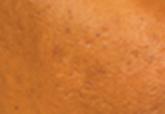Acne scarring is a potentially disfiguring and psychosocially distressing condition that can affect patients of all races, ethnicities, and skin phototypes. Traditional approaches to treating acne scars (eg, dermabrasion, medium to deep chemical peels, CO2 laser resurfacing) are associated with a high risk for pigmentary and scarring complications in patients with skin of color, especially those with Fitzpatrick skin types V to VI, and therefore are not generally recommended in this patient population. However, the advent of nonablative laser technologies, most notably fractional lasers, has broadened the range of treatment options for darker-skinned patients with acne scars.
